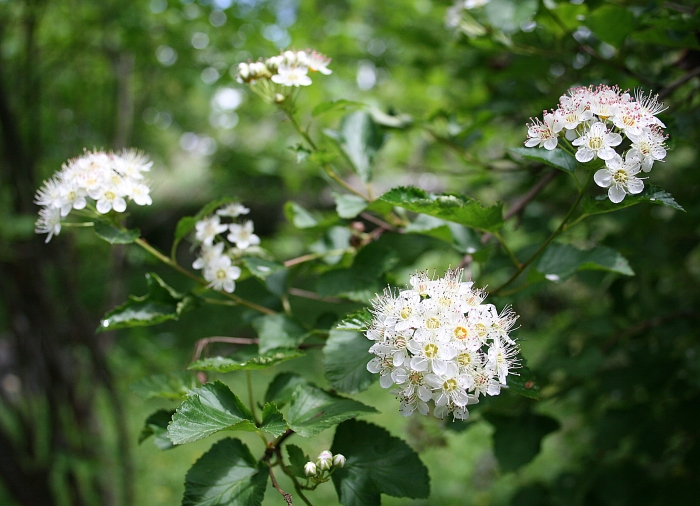Common Ninebark
(Physocarpus opulifolius)
Common Ninebark (Physocarpus opulifolius)
/
/

Jean-Pol GRANDMONT
CC BY-SA 3.0







































































































Estimated Native Range
Summary
Common Ninebark is valued for its fast growth, resilience to pests and diseases, and drought tolerance, making it a low-maintenance choice for gardeners. It is often used in urban plantings, as a border shrub, or for naturalizing in wild gardens. The plant’s adaptability to a wide range of soil conditions, from moist to dry and acid to alkaline, as well as its ability to thrive in gravelly to heavy clay soils, makes it versatile in landscape design. It prefers full sun to part shade and can handle various drainage conditions. Ninebark’s fibrous root system makes it useful for erosion control on slopes. However, it can become leggy if not pruned regularly, and some cultivars may be prone to powdery mildew.CC BY-SA 4.0
Plant Description
- Plant Type: Shrub
- Height: 5-9 feet
- Width: 4-6 feet
- Growth Rate: Moderate
- Flower Color: White
- Flowering Season: Spring, Summer
- Leaf Retention: Deciduous
Growth Requirements
- Sun: Full Sun, Part Shade
- Water: Low
- Drainage: Fast, Medium, Slow
Common Uses
Bank Stabilization, Bee Garden, Bird Garden, Border Plant, Butterfly Garden, Drought Tolerant, Erosion Control, Fire Resistant, Hedges, Potted Plant, Showy Flowers, Street Planting
Natural Habitat
Open woodlands, forest edges, and along streams
Other Names
Common Names: Ninebark, Atlantic Ninebark, Eastern Ninebark, Viburnum-Leaved Ninebark, Schneeball-Blasenspiere, Schneeballblättriger Spierstrauch, Physocarpe, Physocarpe À Feuilles D’Obier, Sept Écorces, Smällspirea
Scientific Names: , Physocarpus opulifolius, Physocarpus opulifolius f. nanus, Physocarpus opulifolius subsp. nanus, Physocarpus opulifolius var. nanus, Spiraea opulifolia, Physocarpus opulifolius var. opulifolius, Opulaster opulifolius, Physocarpus bracteatus, Physocarpus stellatus
GBIF Accepted Name: Physocarpus opulifolius (L.) Maxim.